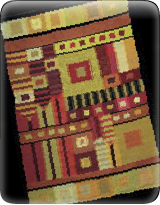
The University Laboratory School is operated by CRDG as a K–12 laboratory for researching, designing, testing, and evaluating effective approaches to improving learning, teaching, and assessment. In its nearly forty years as a research laboratory, the school has served as the seedbed for award-winning curricula in science, mathematics, English, social studies, and music. As CRDG’s curriculum programs have matured, the school has taken on the additional role of demonstration site for the various curricula as well as for our model of teaching and learning with heterogeneous groups of students engaged in a full liberal arts curriculum.
The student population is randomly selected from among applicants to represent a broad cross section reflecting the state population distribution of gender, school-level accomplishment, family income, and ethnicity.
All students are in school for 7.5 hours each day and take a challenging comprehensive curriculum that includes English, mathematics, science, social studies, art, music, performing arts, and foreign languages, as well as electives each year. The school does no tracking of students. All students take the identical core program in non-segregated classes. All students graduate ready for college, work, and responsible citizenship.
The school curriculum is built on multiyear sequences of learning emphasizing creativity, inquiry, problem solving, and active learning. In most cases, students and teachers use CRDG-developed programs and approaches. The school serves as a demonstration site for these programs, hosting observers, researchers, and educatorsin- training.
The broad range of activities included in the school’s core curriculum allows its students to excel in state- and nationallevel programs in all areas. Approximately 80 percent of ULS students participate in activities outside of school in visual and performing arts, speech, mathematics, music, writing, and athletics. Many of these programs take ULS students into the community where they meet and work with students and adults from a broad range of schools and community organizations.
2006 Visual Arts at the Regional and National Level
In keeping with CRDG’s founding philosophy, the Laboratory School employs practitioners as teachers who create communities of learners within the various disciplines of knowledge. ULS takes great pride in the success students have achieved using this artists-in-residence approach in the studio and performing arts, considered to be a part of the core curriculum. ULS arts programs have consistently produced artists, musicians, and actors who understand and are capable of participating fully in the disciplines. This year, the studio arts program reached new levels of success as the students earned unprecedented recognition in the regional and national Scholastic Art & Writing Awards exhibitions. The Scholastic Art & Writing Awards program is the nation’s longest running, most competitive, and most prestigious art exhibition for high school students. Each year, more than 250,000 entries are submitted for judging at more than eighty regional-level competitions. More than one thousand students from the Hawai‘i region submit their two- and three-dimensional artworks for judging at the Hawai‘i Regional Scholastic Art Awards exhibition. The most outstanding works receive regional Gold Key awards and earn the right to participate in the national judging, where panels of distinguished artists review over seven thousand works of art and select national award winners.
In 2006 the University Laboratory School submitted seventy-three artworks to the competition. Thirty-two were selected for the regional exhibition. All four art disciplines taught in the school’s art department (drawing/painting, ceramics, sculpture, and fiber arts) were represented. Ten works received Gold Key recognition and became eligible for national judging in New York. The other twenty-two artworks received Silver Key recognition at the regional level.
At the national judging two students received Gold Awards and four received Silver Awards. In the Design-Product (fiber arts) category, Be Thi Ho (grade 11) received one of only seven national Gold Awards, Bradley Bonilla (grade 12) and Brittany Caron (grade 8) each received one of twenty-one national Silver Awards. These three nationally accepted artworks represent almost 10 percent of national winners in their category. In the Drawing category Jerrold Wu (grade 11) received one of forty-four national Gold Awards, and Chad Kikuchi (grade 12) and Joshua Tran (grade 12) each received one of 154 national Silver Awards. The Gold Key winners’ art was exhibited at the Corcoran Gallery of Art in Washington, DC, during the summer and will travel and be exhibited throughout the United States for the next two years. The Alliance for Young Artists & Writers, the event’s organizer, recognized Val Krohn-Ching (fiber arts) and Matthew Miller (drawing/painting), the students’ art teachers, as outstanding educators for 2006.
The number of works in the Hawai‘i regional show has been reduced from a high of approximately 400 in the 1970s to 212 in 2006, yet the Laboratory School’s acceptance rate has almost trippled during that period. At both the regional and national levels, 2006 was the most impressive and successful year for University Laboratory School’s students in thirty-six years.
